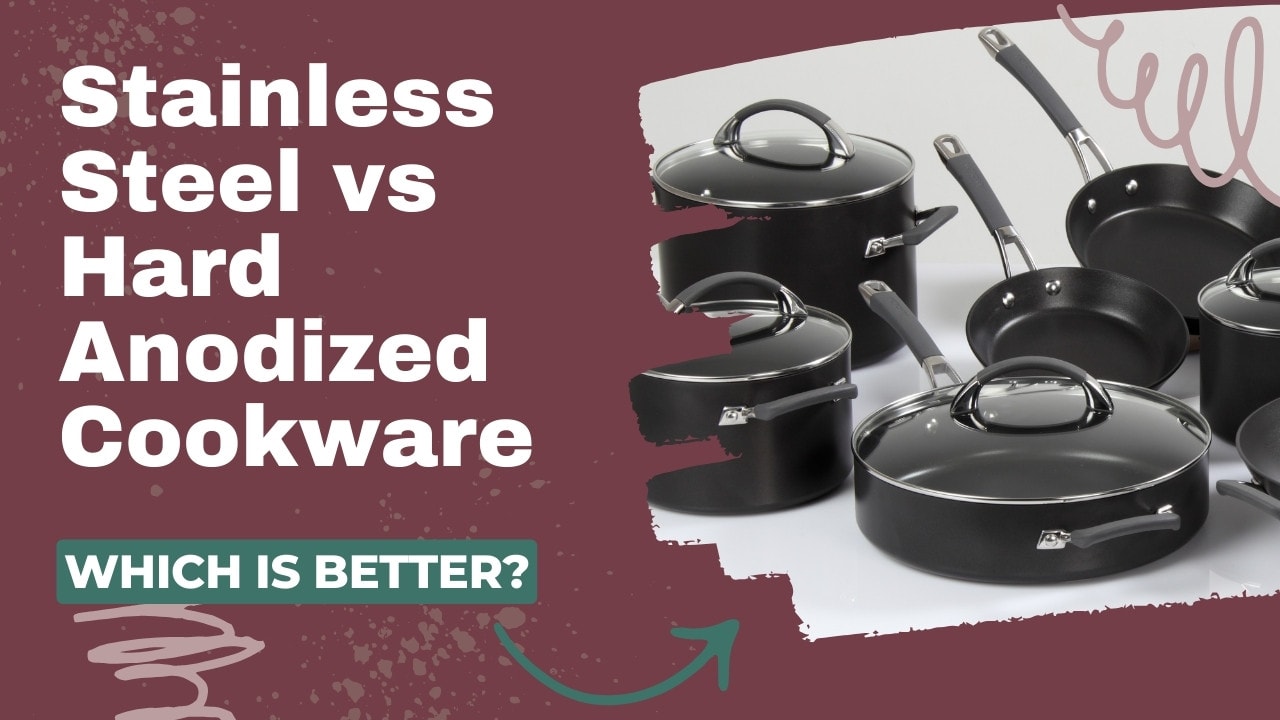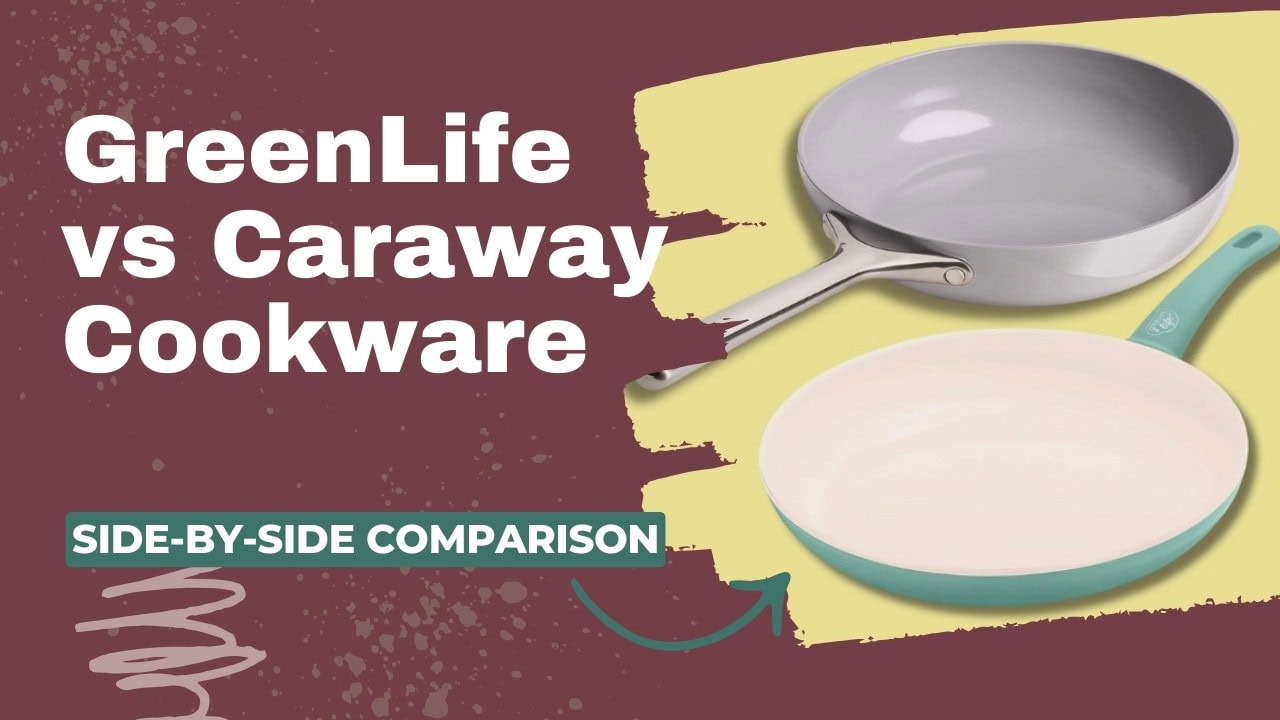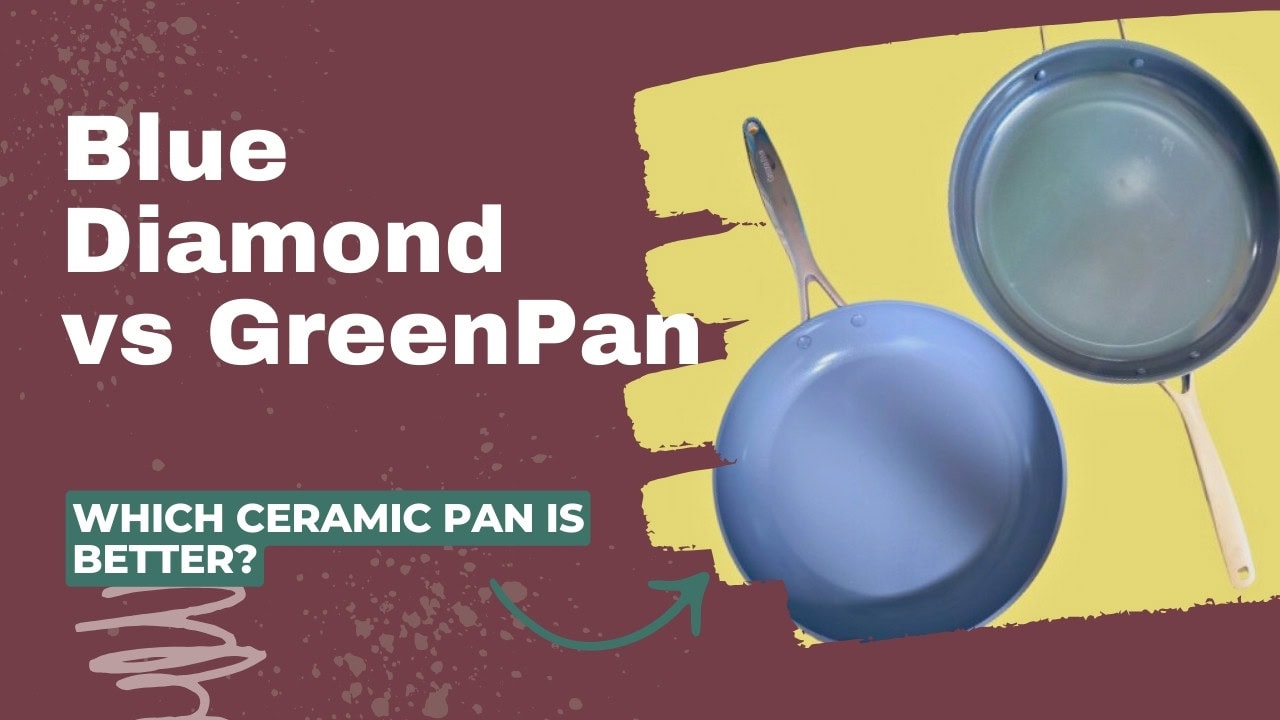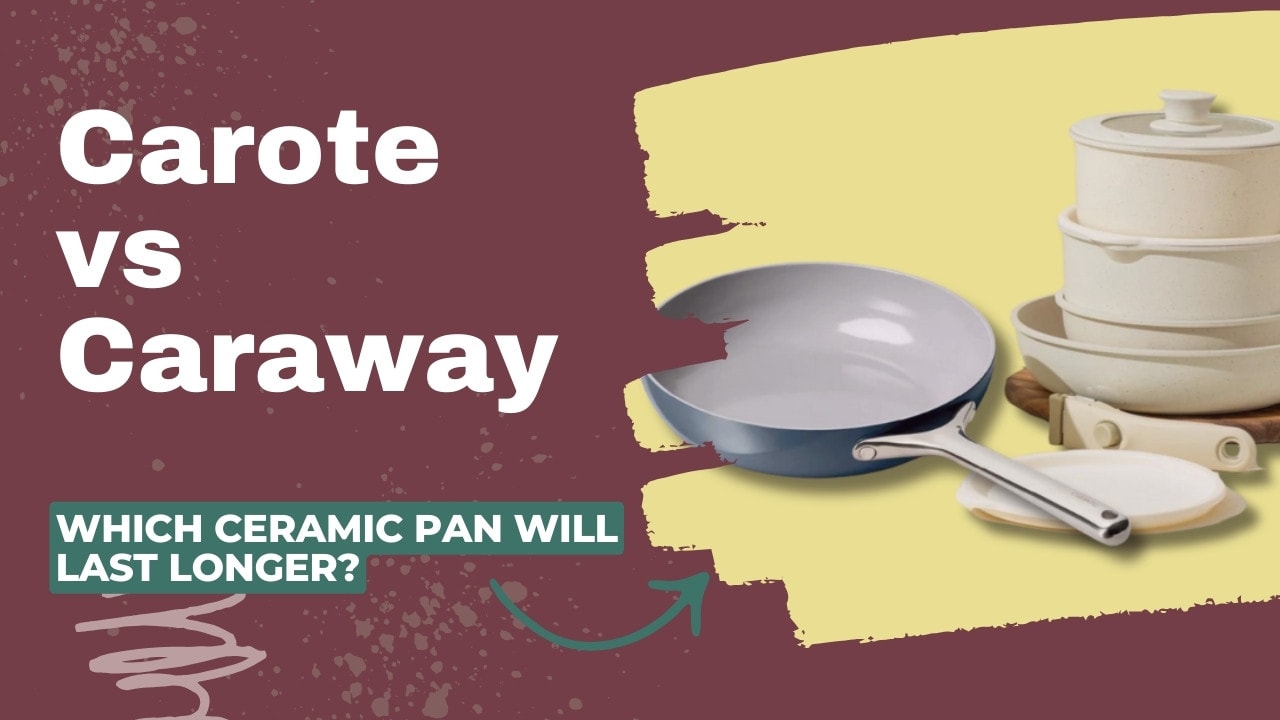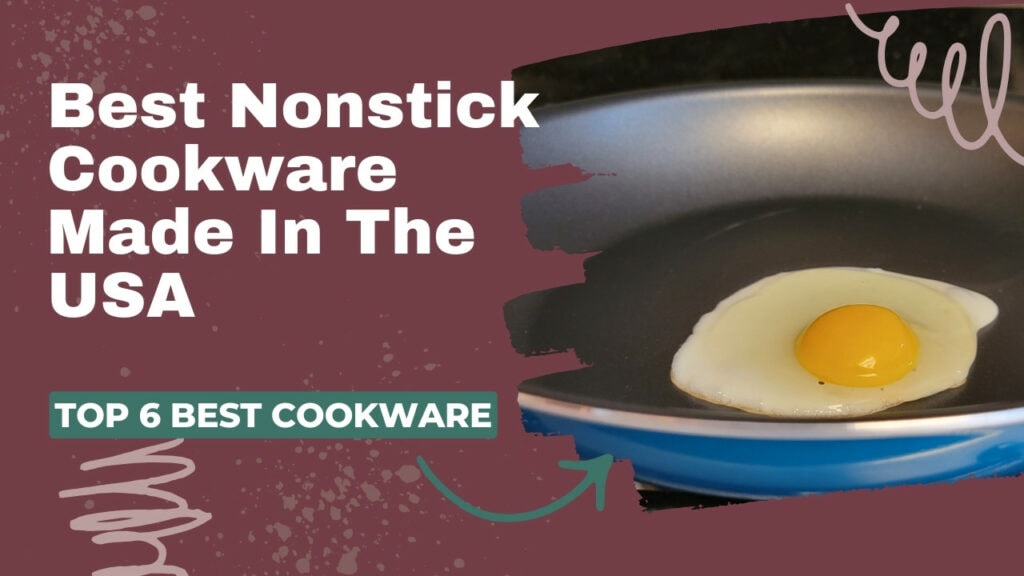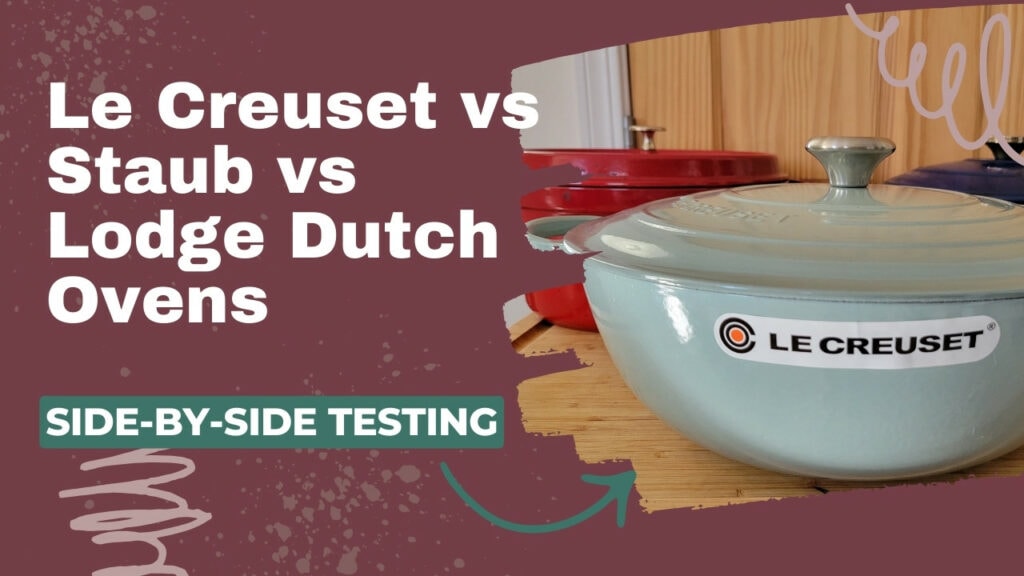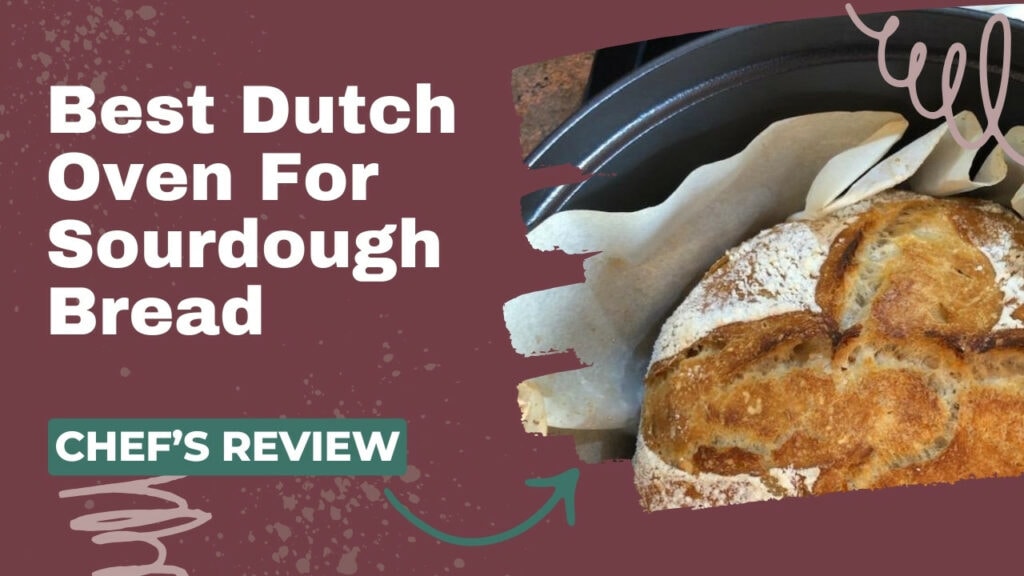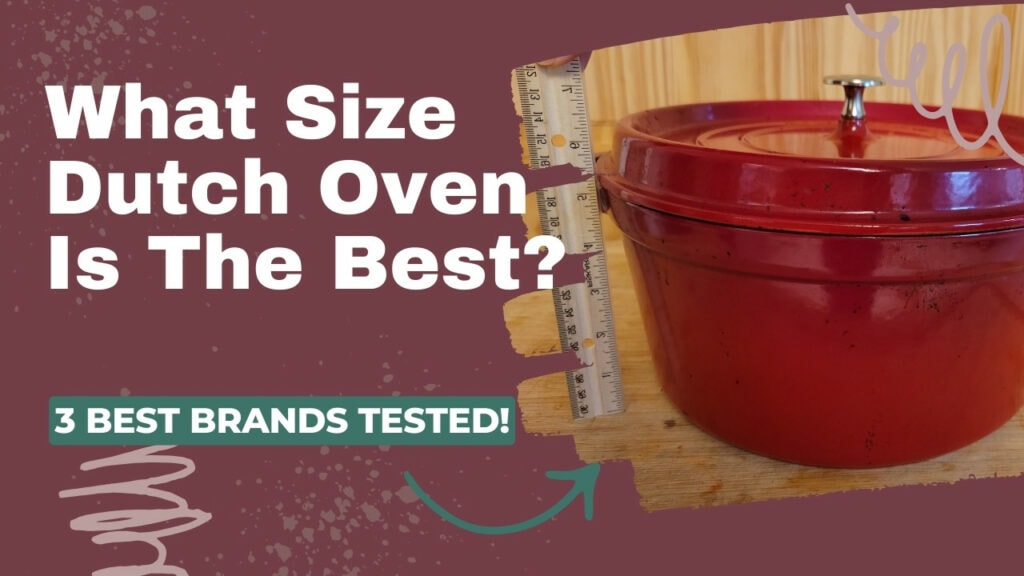If you’re looking for new cookware for your kitchen, there’s a good chance you’ve narrowed down your options to hard anodized aluminum or stainless steel. Both are among the most durable cookware materials – but they perform quite differently from each other!
Most of today’s hard anodized cookware has a nonstick coating, making it easy to use. But stainless steel is all the rage these days, thanks to its durability and, ironically, its lack of a synthetic nonstick coating.
I’ll cover all the differences between the two cookware types, and I’ll share which one I recommend.
What is Hard Anodized Cookware?
Regular aluminum is soft and prone to corrosion, although it’s exceptionally heat-conductive. So manufacturers may use an electrochemical process to create a layer of aluminum oxide coating on aluminum, resulting in hard-anodized cookware. The metal is immersed in a sulfuric acid bath and exposed to a low-voltage current. This anodizing process makes aluminum’s surface hard and corrosion-resistant.
This anodizing process affects the cookware’s appearance. Bare hard-anodized aluminum cookware has a dark gray exterior, although it’s painted in many brands.
Since the anodized coating is integrated into the underlying metal, it’s highly resistant to scratches, chips, and peeling. Although this layer makes aluminum virtually non-stick by itself, virtually all hard anodized aluminum cookware has a nonstick coating, which can either be made of “ceramic” or a polymer called PTFE.
So, while the aluminum oxide isn’t going to come off your hard-anodized cookware, the nonstick coating on top of it will likely peel, scratch, or chip within 2-5 years. Hard anodized cookware is less durable than stainless steel because of its nonstick coating, not because of the base material itself.
What is Stainless Steel Cookware?
Stainless steel is an alloy of iron mixed with different metals, usually chromium, manganese, molybdenum, and nickel. These metals make iron corrosion and rust-resistant, but they detract from its ability to transfer heat.
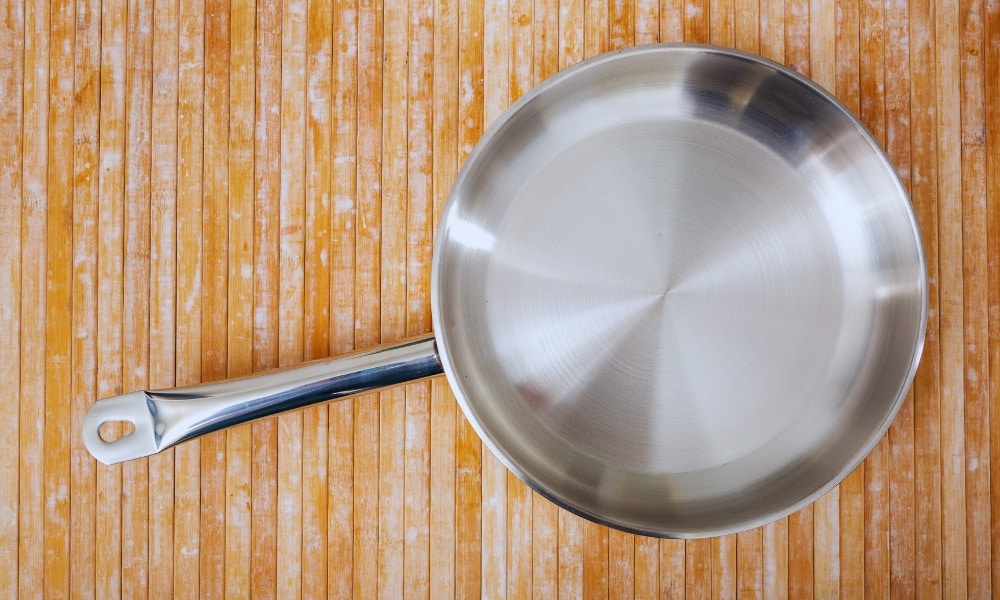
Manufacturers overcome this limitation by adding highly conductive metals — aluminum or copper – to stainless steel cookware. They may be bonded in a thick layer to the cookware’s base, or they may be integrated into the entire body of the pan through cladding. With cladding, copper or aluminum sheets are placed between two stainless steel layers to increase their ability to heat up.
12 Differences between Hard Anodized Aluminum and Stainless Steel Pans
Stainless steel and hard anodized aluminum are both great choices for cookware, suitable for different purposes. You can make use of both in a well-rounded kitchen! Here are some main differences between the two.
1. Material
Hard anodized aluminum is stronger and less likely to warp than regular aluminum. The body of a hard anodized pan is made from a single material – unlike stainless steel, which has layers of metals as described above. But since, as I mentioned, you can’t find bare hard anodized cookware in stores these days, you need to consider what the nonstick coating is made from.
Ceramic and Teflon (PTFE) coatings both have their pros and cons. The general public believes ceramic coatings to be healthier, but many medical professionals don’t see Teflon as unsafe if used correctly.
When shopping for stainless steel cookware, you’ll need to consider the gauge (thickness) and grade of the material. Some types you may encounter include:
Beyond the grade of stainless steel, you’ll need to consider the core material. Most affordable stainless steel pans have aluminum, rather than copper, cores – but the thickness of the aluminum layer can greatly affect the pan’s weight and performance.
2. Heat Tolerance
Both stainless steel and hard anodized aluminum have superior heat tolerance as raw materials. When exposed to extreme temperatures for a short time, hard anodized aluminum can withstand up to 3,632°F. Of course, you won’t be cooking anything at this temperature!
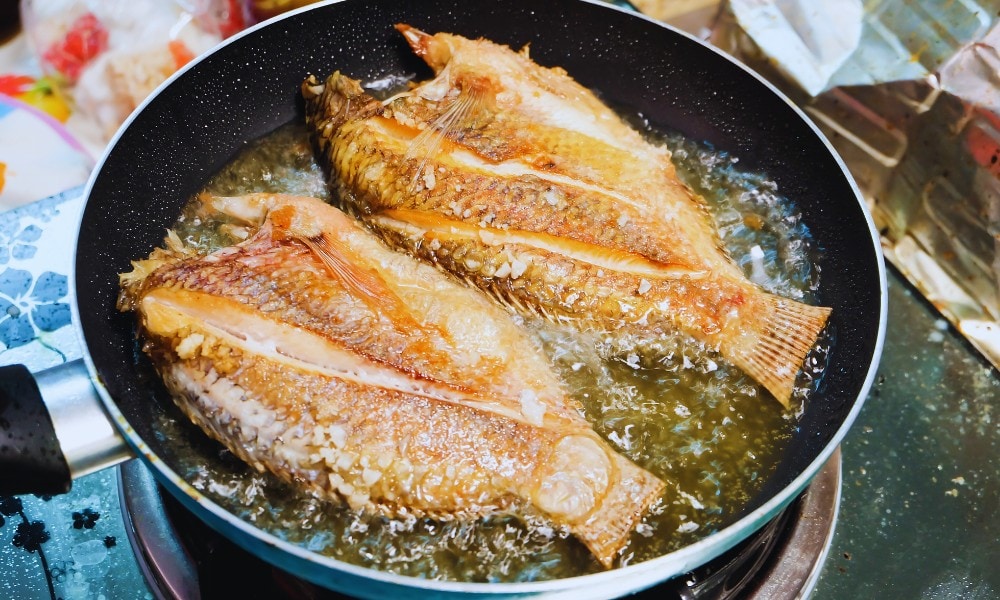
The problem with hard anodized aluminum cookware isn’t the metal. The limiting factor is its nonstick coating.
PTFE coatings can release dangerous fumes if heated over 500°F, and it isn’t broiler-safe.
In theory, stainless steel grade 304 can tolerate up to 1,697°F – even in cookware form. However, manufacturers usually recommend an upper-temperature limit for safety reasons. All-Clad’s 5-ply stainless steel cookware withstands up to 600°F.
3. Heat Transfer
Stainless steel holds on to heat well, but its ability to heat quickly and respond to temperature changes depends on the thickness of its aluminum or copper core. Stainless steel distributes heat evenly, so once it’s fully heated, you shouldn’t have hot spots on high-quality pans.
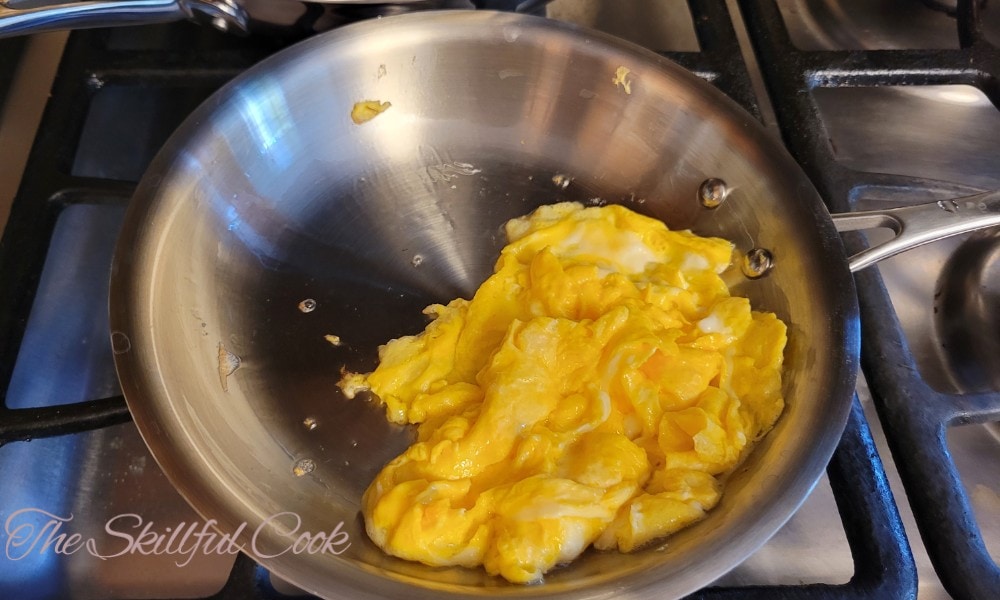
Aluminum is very conductive. But, interestingly, the anodization process reduces heat transfer, so hard anodized aluminum doesn’t heat up as easily as regular aluminum. Thus, with hard anodized aluminum, you may experience more hot spots in your pan.
4. Nonstick Ability
Anodizing alters the metal at molecular levels. The oxidized layer has smaller microscopic pores, so food sticks less. If you find vintage hard anodized aluminum without a coating, it’ll be fairly nonstick. That said – all modern hard anodized cookware is very nonstick – at least at first – thanks to its layers of PTFE or ceramic coating.
On the other hand, stainless steel isn’t nonstick, which is one of its biggest drawbacks. You can make it virtually “stick-less” with proper handling. However, nonstick hard anodized cookware has this feature out of the box.
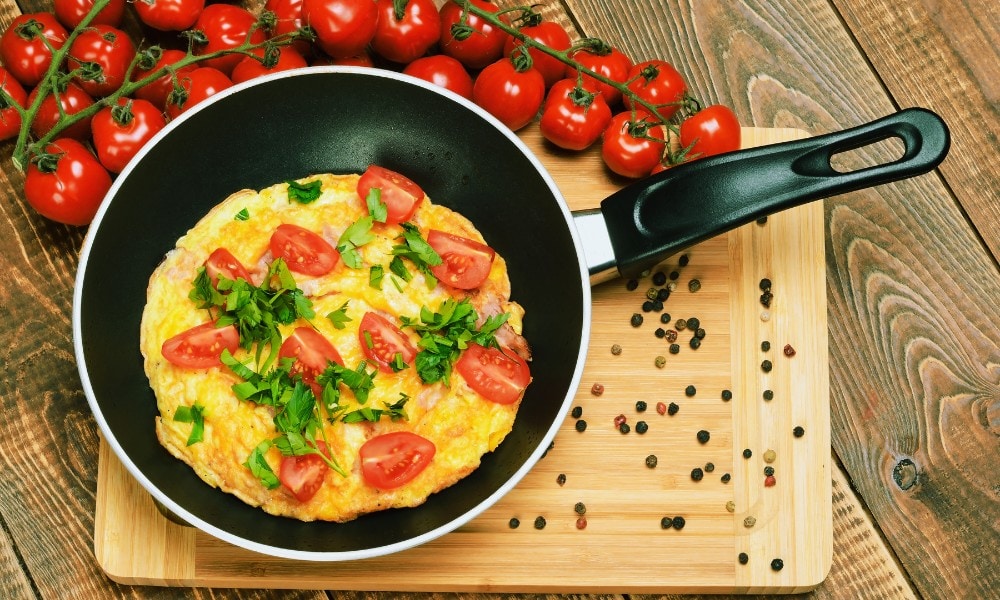
5. Ease of Use
Thanks to its nonstick coating, hard anodized aluminum is extremely easy to use. The only thing you should be careful with is not to heat it too much since high heat can degrade Teflon and ceramic.
However, stainless steel comes with a learning curve. If you want it to be nonstick, you’ll need to practice to know when it’s ready to add food.
6. Cooktop Versatility
Stainless steel is more versatile than hard anodized aluminum. It’s compatible with almost every cooktop, including oven and broiler. If your cookware has ferritic stainless steel on the exterior, it’s also induction-compatible.
However, hard anodized aluminum isn’t that versatile. It’s not induction-compatible since it doesn’t have magnetic qualities. However, some brands, like All-Clad, add a stainless steel disc to the bottom of their hard anodized cookware, making it induction-compatible.
7. Applications
There are very few cookware types that can be used for cooking all types of food – but stainless steel is one of them. It’s perfect for boiling water, making soup, and even baking. And if you preheat it correctly, you can fry flaky and sticky proteins like fish and eggs. The only thing you can’t make in stainless steel is low-fat food.
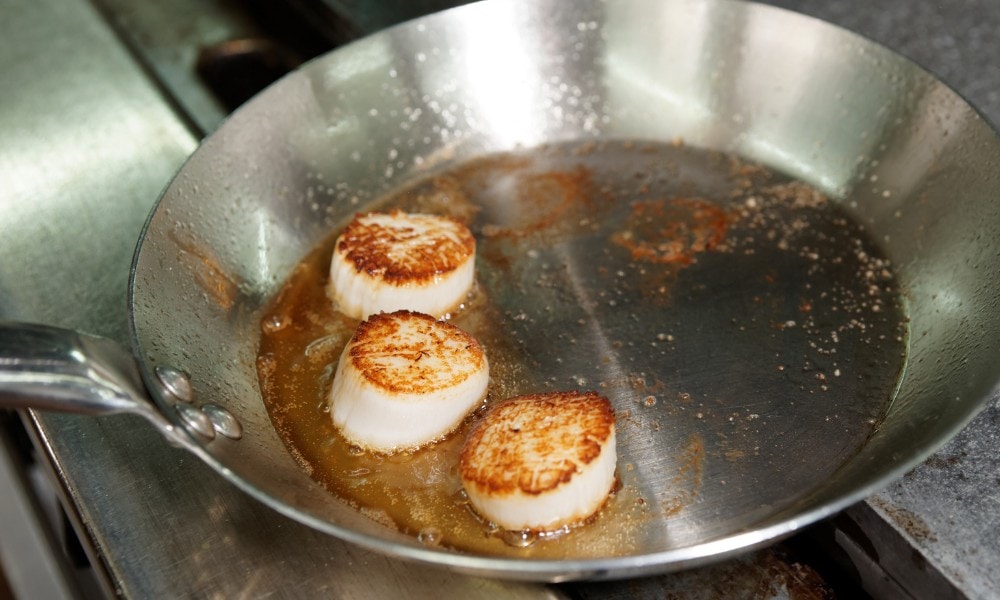
While nonstick-coated hard anodized cookware is perfect for cooking with minimum oil, its versatility is limited. It shouldn’t be used for searing meat or other high-heat applications. The nonstick surface can’t create that sought-after browning effect that stainless steel or cast iron can.
8. Cleaning, Care, and Maintenance
If your hard anodized aluminum cookware has a nonstick coating, it’s extremely easy to clean. The nonstick surface requires a gentle dish soap and a soft sponge for washing. However, it takes a bit of maintenance, like watching the temperature and using non-metal utensils to prolong the life of the nonstick coating, whether it’s ceramic or Teflon.
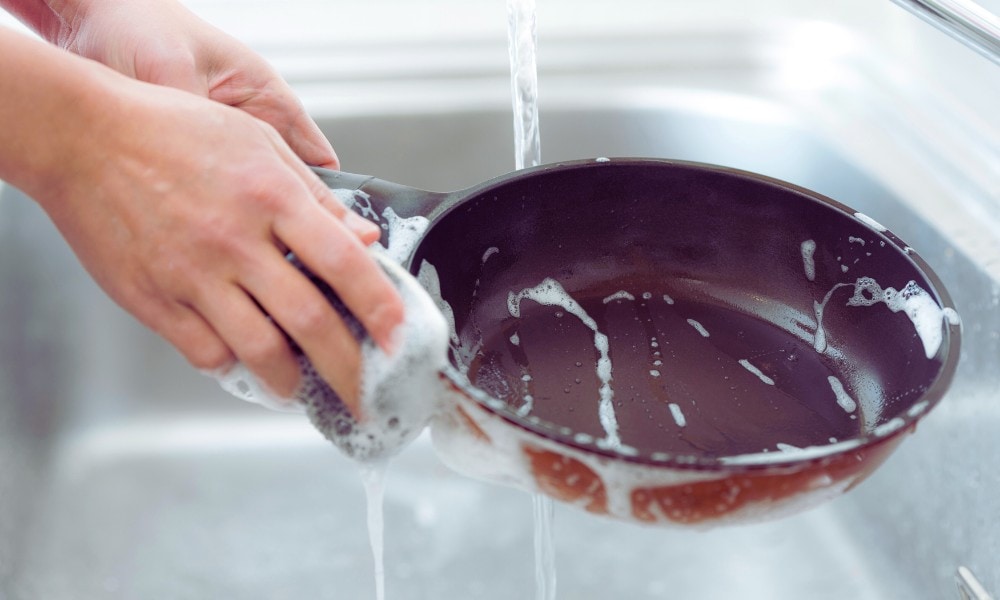
Stainless steel can be more difficult to wash, although it can be made nonstick with proper preheating. However, you don’t need strong detergents and scrubbers to clean your stainless steel cookware. It may develop a rainbow tint, which you can clean with home remedies.
Hard anodized aluminum isn’t dishwasher-safe; handwashing is the only way to go. However, most stainless steel cookware is dishwasher-safe.
9. Longevity and Durability
Stainless steel is famous for lasting a lifetime. It’s an iron alloy with added metals that make it warp, corrosion, and wear-resistant. You can get a lifetime of use out of your stainless steel cookware with proper care.
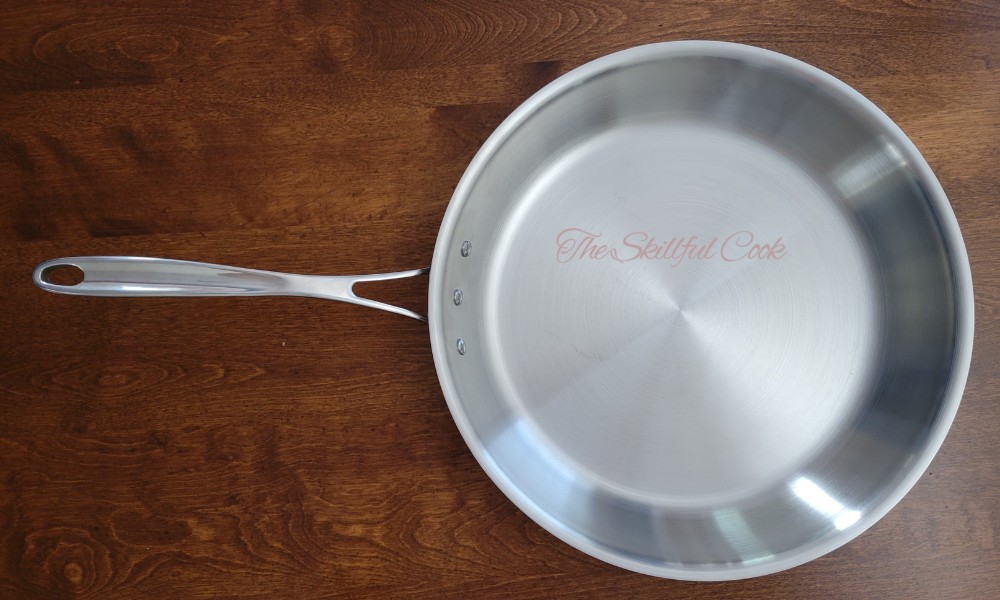
Hard anodized aluminum is also durable, thanks to its oxidized coating. However, the nonstick coating has a short lifespan. Teflon and ceramic lose their nonstick ability after a couple of years and require replacement every two or three years. That’s why most ceramic-coated cookware doesn’t have more than two years of guarantee.
10. Health, Safety, and Environmental Concerns
You may have seen many home and professional chefs ditch their nonstick pots and pans for stainless steel. The main reason is health concerns. Stainless steel is prized for being among the healthiest options. It’s nonstick and doesn’t contain PTFE.
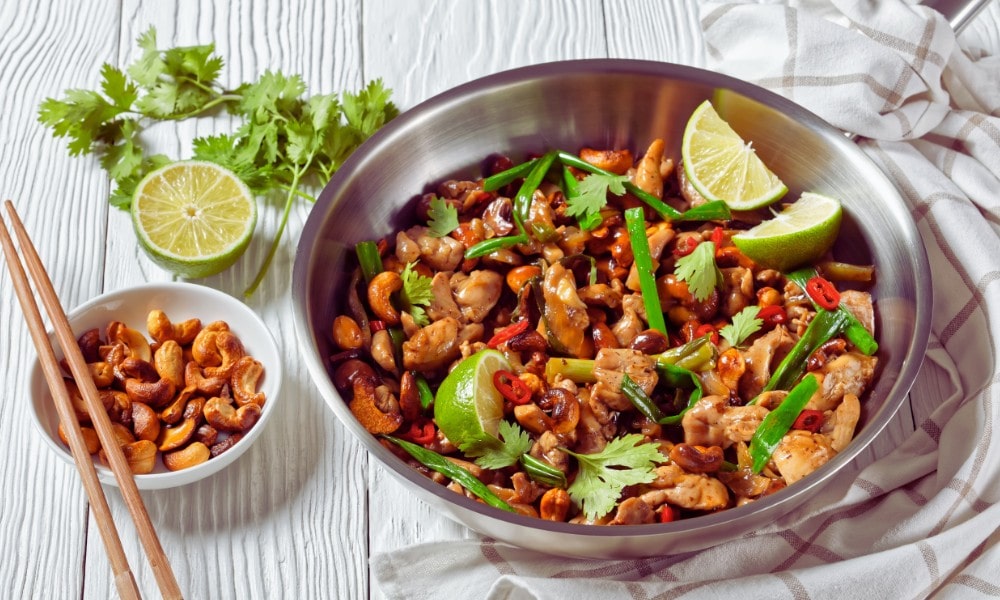
Hard anodized aluminum is much safer than regular aluminum. It’s less reactive and wouldn’t leach aluminum into your food if it touched it. However, the polymer coating on today’s hard anodized cookware makes it a no-go for many people.
11. Style and Aesthetics
Stainless steel has a sleek, shiny appearance, making it a great addition to any kitchen. Some pans have brushed exteriors and some are polished.
Hard anodized aluminum cookware can also have aesthetic appeal. Their Teflon and ceramic cooking surfaces give them a clean look, and the exteriors are often painted.
12. Price
Stainless steel is generally more expensive than hard anodized cookware. For example, a 10-piece stainless steel set like this Made In set costs nearly three times as much as a 10-piece hard-anodized nonstick set like this KitchenAid set.
Still, prices may vary even within the same brand. For example, this KitchenAid 12” ceramic-coated pan costs more than their same-size stainless steel pan.
This shows the wide range of prices available on both camps, but a general comparison shows that stainless steel is more expensive. In general, hard anodized aluminum is more expensive than regular aluminum.
The Better Option: Stainless Steel vs Hard Anodized Cookware
Picking the better option between hard anodized aluminum and stainless steel depends on your preferences and budget. However, I always lean toward stainless steel.
Although pricier, stainless steel can be more worthwhile due to its superior longevity and safety. You can use it for any cooking style; there’s virtually nothing you can’t cook with your stainless steel. If you take proper care of your stainless steel cookware, it can be a lifetime investment.
Your best bet may be a combination of both, keeping one or two hard anodized pans to enjoy their nonstick properties.
Conclusion
Hard anodized aluminum and stainless steel are great home and commercial kitchen choices. However, stainless steel offers more attractive perks in my book. It’s safe, more durable, and versatile. The nonstick coating on hard anodized cookware is a disadvantage because it only lasts a few years.

